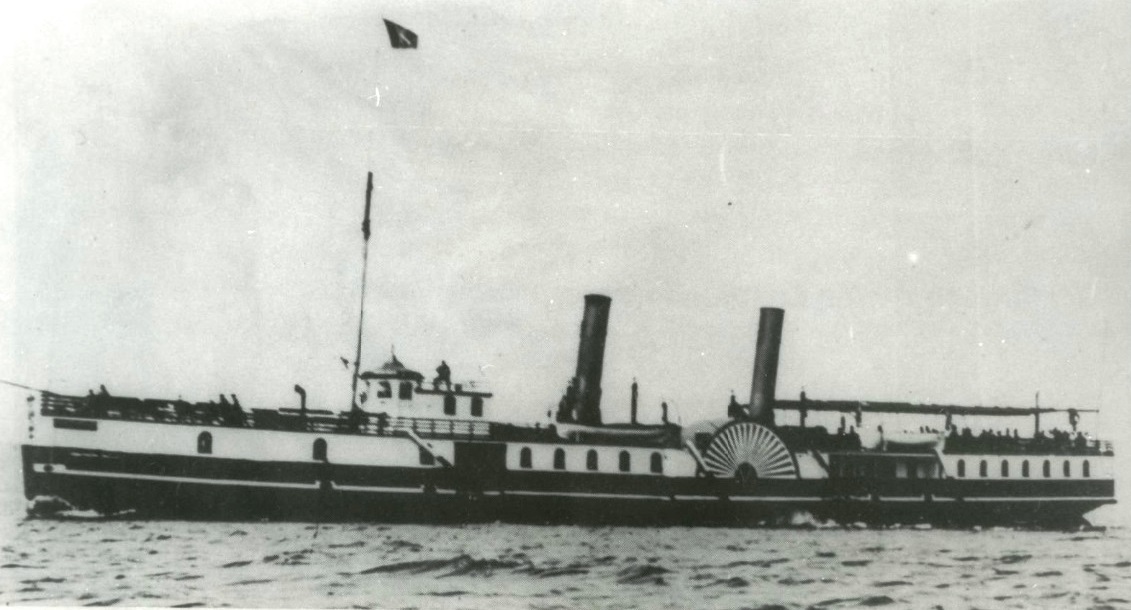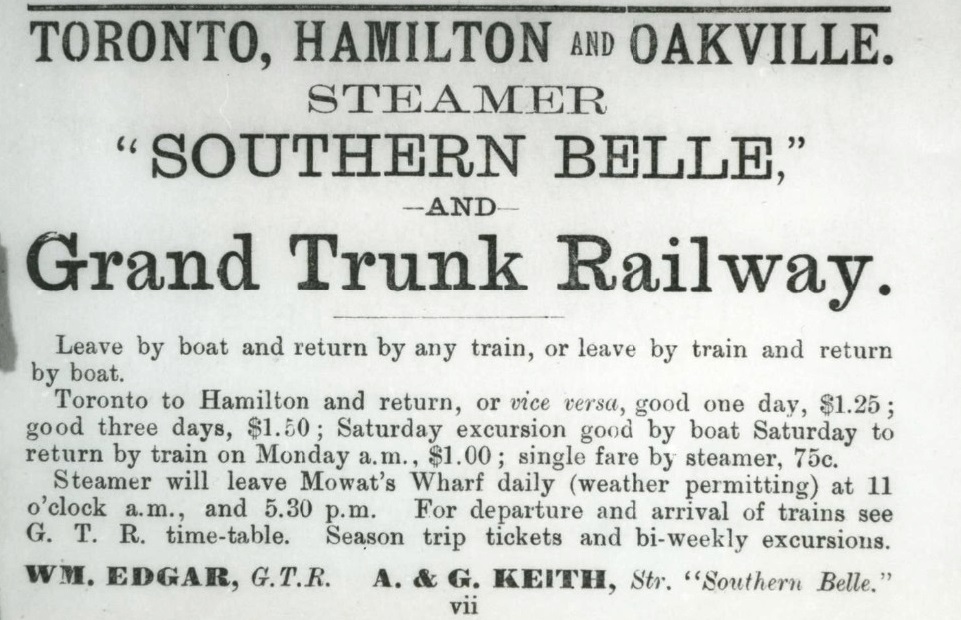Continuing our theme on the era of the steamships, another well-known passenger steamer that brought summer visitors from Toronto to Port Credit, Lorne Park, Oakville, and all recreational and amusement points from Niagara and back was the Southern Belle.
But like many, the Belle had begun life in another vocation and under another name. The Belle was built as the Rothesay Castle (not to be confused with another steamer called Rothesay).
The Rothesay Castle was built in Renfrew, Scotland in 1861. She was a side-wheel paddle steamer, sleek and fast. While her actual owner in 1863 was a David McNutt of Glasgow, Scotland, she was registered as having a home port of Nassau in the Bahamas (one report references its home port as San Pedro, Honduras), and her owner was listed as being the Emperor of China. It is doubtful that Tongzhi Emperor, ninth Emperor of the Qing dynasty in China, knew.

But why the subterfuge?
The Rothesay Castle was a blockade runner. During the American Civil war, the Union attempted to enforce a blockade of seaports along the Confederacy’s eastern seaboard. As a result, the Confederates employed a “camouflage” strategy – obscuring the intended ports of call, the origins of ships, and the cargo that they carried. As the Union blockade tightened, the blockade runners became vital to supporting the Confederate war effort.
The runners, like the Rothesay Castle, were small, shallow-draft, and fast. They could sail closer to the shoreline, and with their speed outrun and evade warships blockading the ports. Many of the runners were caught, and many more were wrecked, but some managed to survive intact. When the war ended, many of the steamers were sold and thus began a new chapter of their story. Such was the fate of the Rothesay Castle.
During the civil war, the Rothesay Castle successfully brought supplies from Scotland to Virginia on its first crossing, and also made five successful runs to Nassau. After her war service, she was purchased by Thomas Leach of Halifax, Nova Scotia to run the St. Lawrence River to Montreal. This phase of her life was short-lived, and by 1866 she was brought to Lake Ontario, refitted at Toronto, and commenced passenger service between Toronto and Niagara.
As recorded in the Oakville Historical Society’s Newsletter (June 2008, Volume 42, Number 2): “As mercantile traffic declined on Lake Ontario, the pleasure traffic increased during the 1860’s. By the 1880’s, often three or four excursions with 1000 to 3000 people would arrive in one day. During the summers of 1867 and 1868, the steamer Rothesay Castle alone transported one or more excursions most every day of the week. Beardsley’s Grove, just east of Allan Street on the lake, was a popular destination.
On June 3, 1869 a Temperance excursion brought five-hundred passengers from Toronto. By 1873 five trains running each way stopped at Oakville. With increased speed, frequency and reliability, train travel continued to eat away at steamboat passenger revenues. However, lake passenger travel was destined to last several more decades.”
By 1869, with increased competition and a decline in profitability on the Niagara route, the Rothesay Castle was again sailing the St. Lawrence between Montreal and Halifax. In 1874 she suffered a major fire while berthed at Point de Chene, New Brunswick. She was rebuilt, with enlarged (and more luxurious) cabins and passenger accommodations. In the late fall of 1874, the Rothesay Castle returned to Lake Ontario and Toronto.
On August 16, 1875, while returning to Toronto from Hamilton during a storm, she sailed over the wreck of the steamship Monarch near Toronto Island, and the wreck’s boiler holed her hull. Rapidly taking on water, all the passengers and crew were saved, but the Rothesay Castle sank in Toronto harbour. The ship was raised, rebuilt and refitted by Heron & Leach of Toronto. She was relaunched on April 26, 1875 under a new name – the Southern Belle.

The Belle, as she was called, was well-appointed, albeit somewhat smaller than some of her contemporaries and rivals on the excursion routes between Toronto and Niagara. Her sleek profile and double smokestacks became a well-recognized site along its route: her “long narrow hull, low broad paddles and raking funnels unmistakeably indicated speed.”
The Belle called at Lorne Park regularly between 1879 and 1888, usually daily during the summer months. But the sand was running out for the steamers. One by one, they dwindled, succumbing to age, storms, and other modes of transportation.
The Southern Belle was sold to the Toronto & Hamilton Navigation Company in 1886, and after a few years, with her age beginning to show, she was laid up in 1889. In 1890 efforts were made to spruce up the ship in an attempt to find a new owner, but without success. She was officially retired in 1891, and made her last voyage to Mill Point near Picton, where she was scrapped.




Comments are closed.